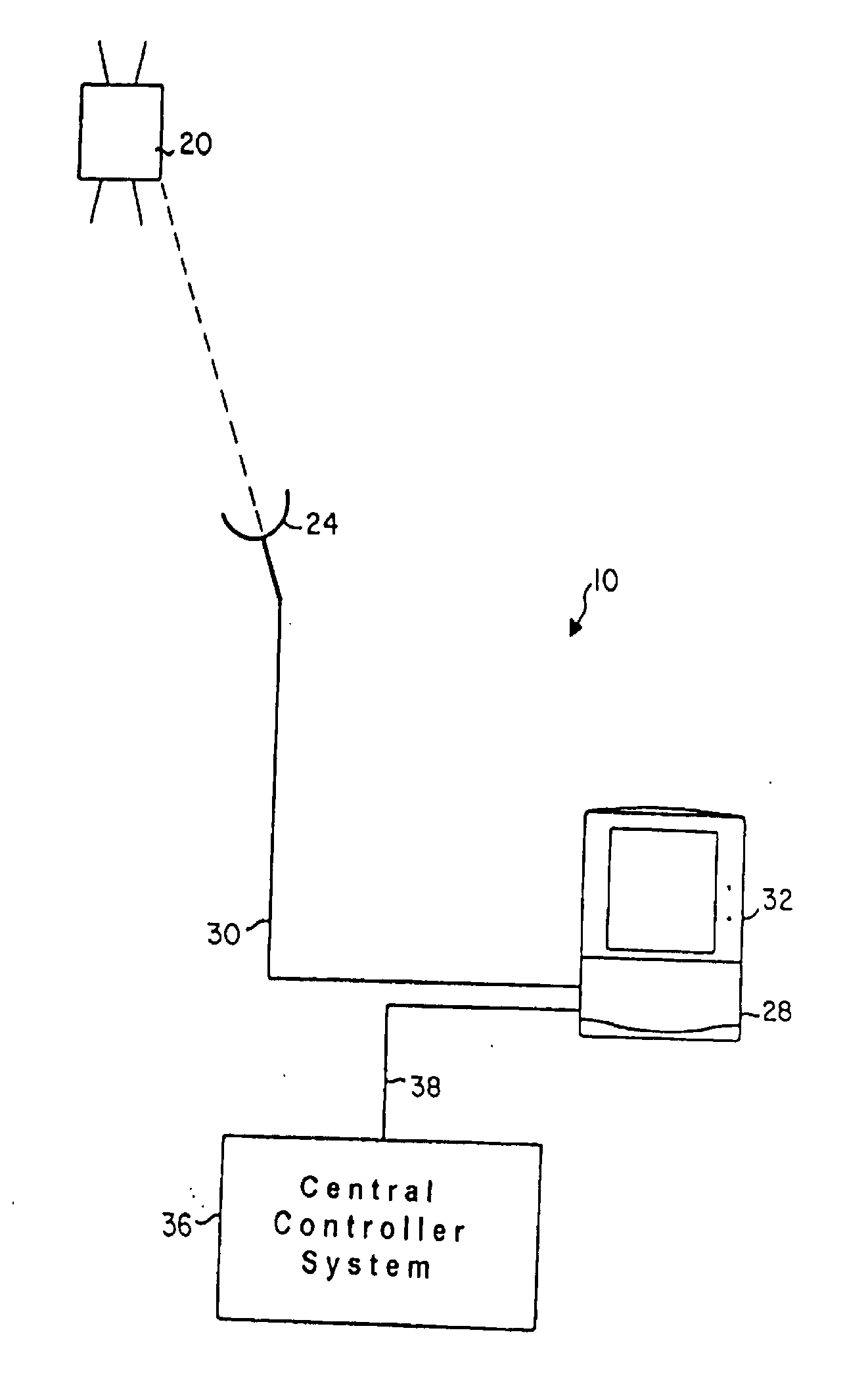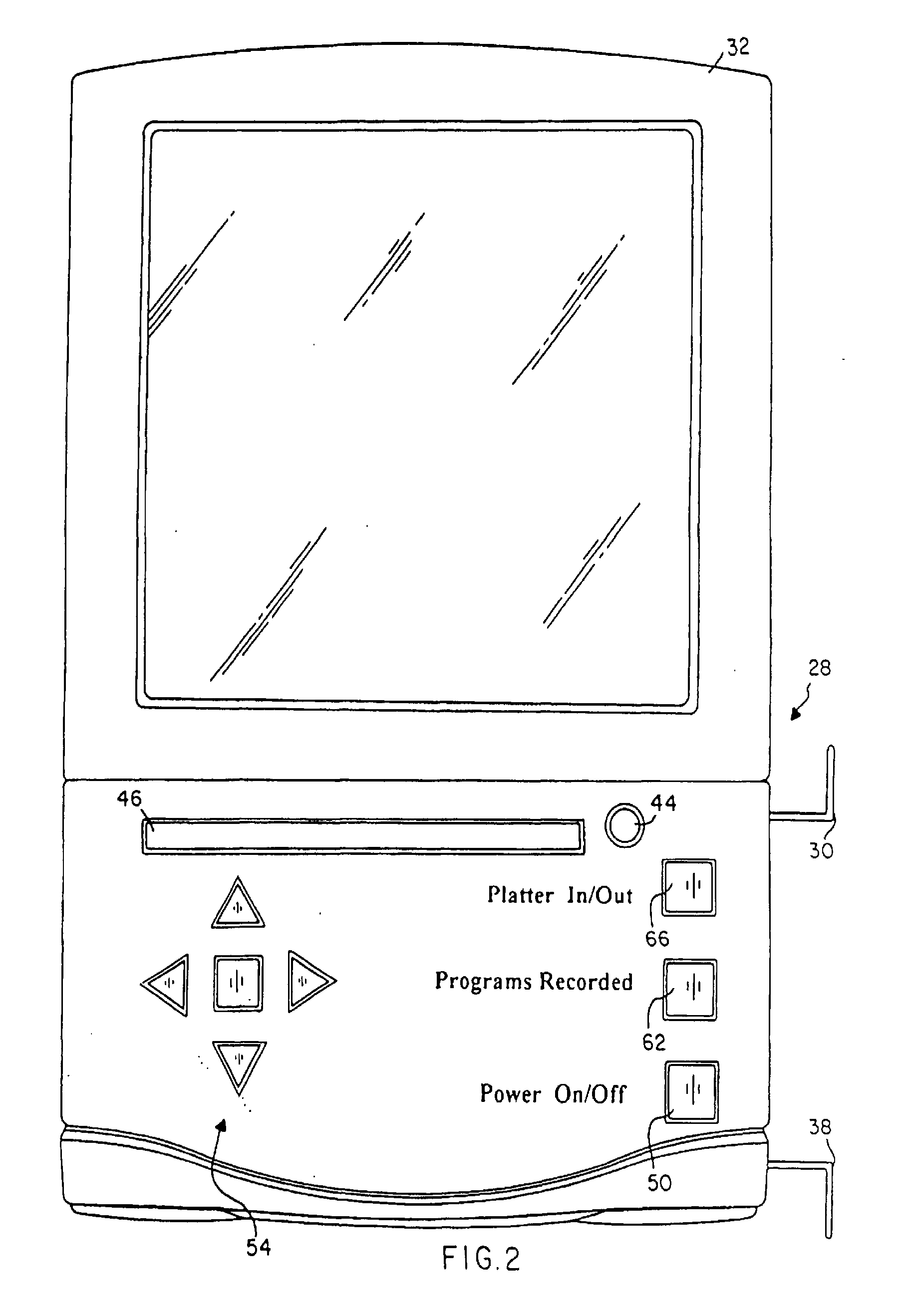Video Distribution System
a technology of video distribution system and video cassette, which is applied in the field of video distribution system, can solve the problems of high cost of video cassette purchase by rental stores, high capital outlay for real estate (land and building), high labor cost at the stores, and type of video demand system, so as to prevent conversion and duplication for playback
- Summary
- Abstract
- Description
- Claims
- Application Information
AI Technical Summary
Benefits of technology
Problems solved by technology
Method used
Image
Examples
example i
[0090] The video distribution system of the present invention is implemented using the business model of FIG. 10, the DISH 500 DBS system, and the other hardware and software systems described above and illustrated in the drawing figures.
[0091] The video / audio content provided by the video distribution system is transmitted in real time (i.e., not time-compressed—average movie 110 minutes). The movies are blanket broadcast utilizing approximately 49% of the total capacity of the DISH 500 system, with transmission times heavily weighted for Tier 2, 3 and 4 movies to off-peak broadcast hours (e.g., 1:00 am -8:00 am).
Movie “Hierarchy”
[0092] Tier 1: The current 100 new release movies from major studios. [0093] Tier 2: The 6000 movies that are at the second level of consumer demand after the Tier 1 new release movies. [0094] Tier 3: The 8000 movies at the third level of consumer demand. [0095] Tier 4: 60,000 additional movies.
Transmission Schedule [0096] Tier 1: Each new release mov...
example ii
[0102] The video distribution system of Example II is implemented with the same tiers of movies as Example I with the difference being that the Tier 1 movies are transmitted in compressed time format to a high speed memory buffer contained in the user station which, in turn, writes to the DVD RAM disc at its maximum write speed. This compressed time transmission (e.g., 8 to 10 minutes per movie) permits consumers to have movies, particularly Tier 1 movies, available on short notice, often in a time less than or on the order of that time required for a round trip to a video rental store. To further facilitate this enhanced availability of movies on short notice, according to Example II Tier 1 new release movies are transmitted every 30 minutes from 5:30 pm to 8:30 pm, and at several other times daily.
example iii
[0103] Same as Example II except that all movies are transmitted in compressed time format.
PUM
 Login to View More
Login to View More Abstract
Description
Claims
Application Information
 Login to View More
Login to View More - R&D
- Intellectual Property
- Life Sciences
- Materials
- Tech Scout
- Unparalleled Data Quality
- Higher Quality Content
- 60% Fewer Hallucinations
Browse by: Latest US Patents, China's latest patents, Technical Efficacy Thesaurus, Application Domain, Technology Topic, Popular Technical Reports.
© 2025 PatSnap. All rights reserved.Legal|Privacy policy|Modern Slavery Act Transparency Statement|Sitemap|About US| Contact US: help@patsnap.com



